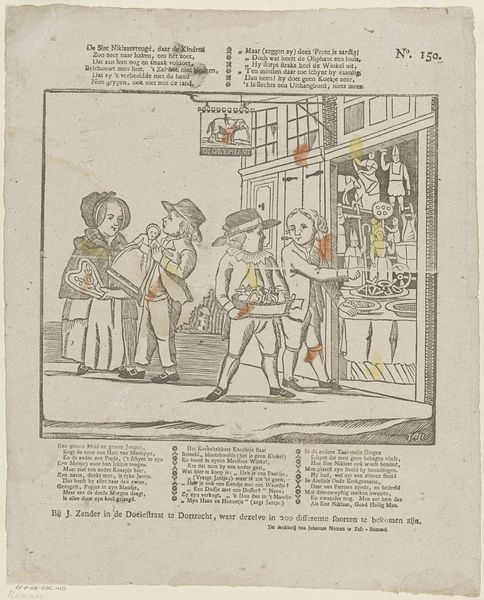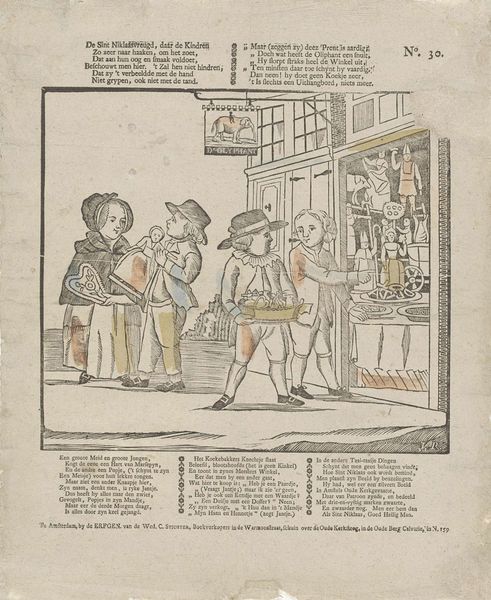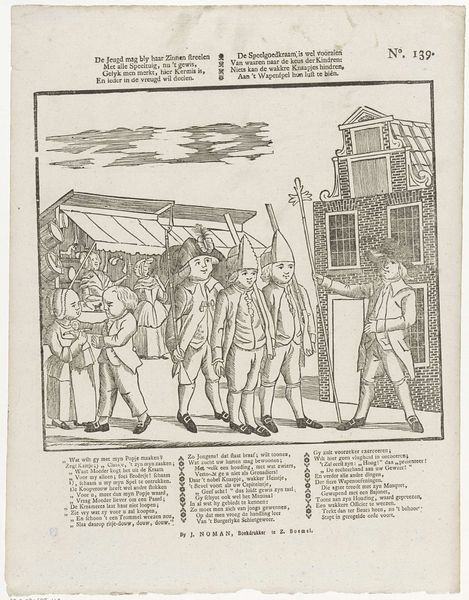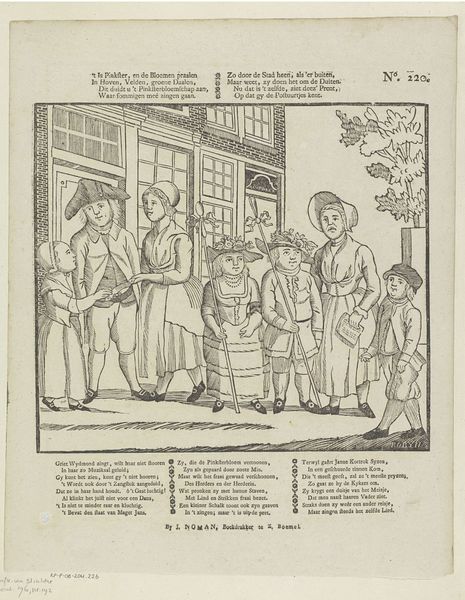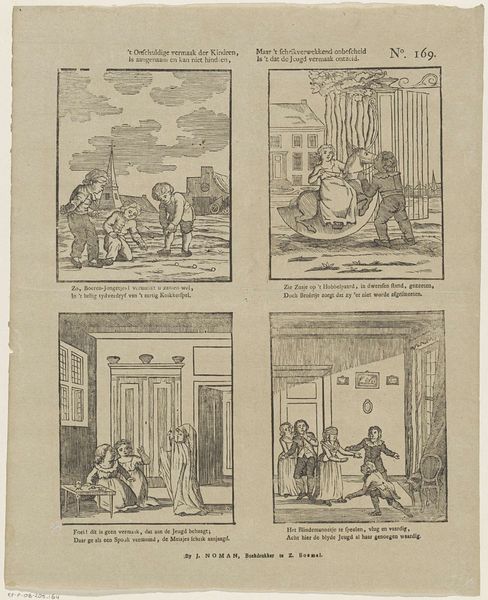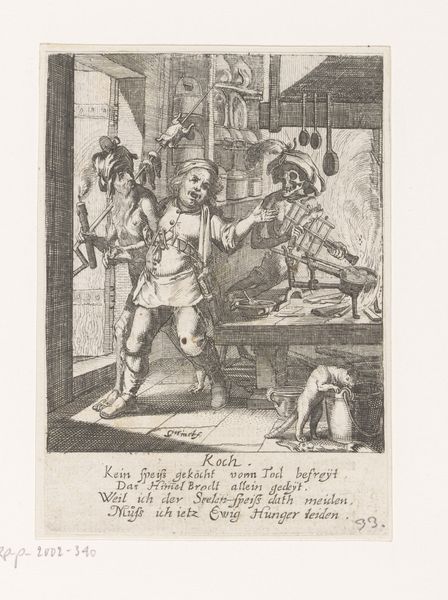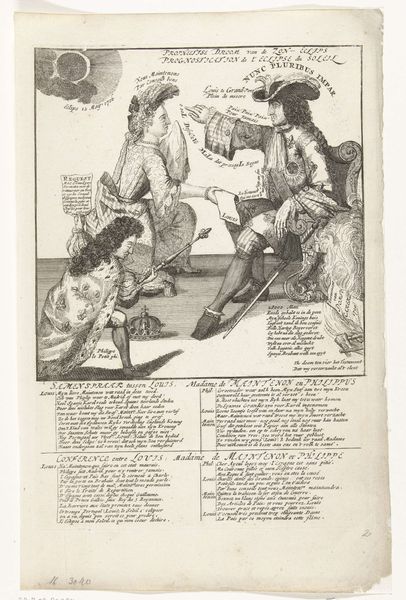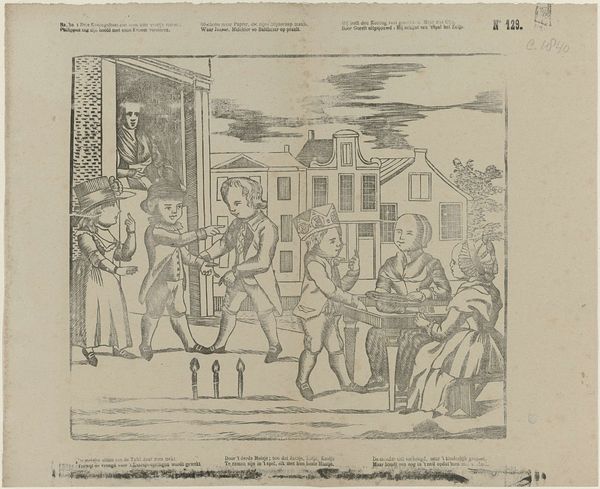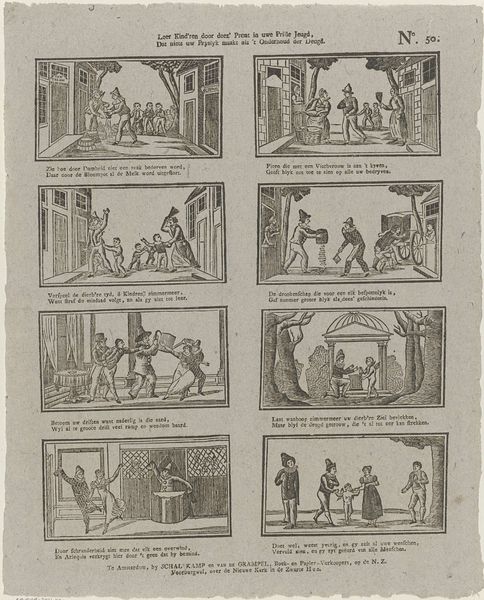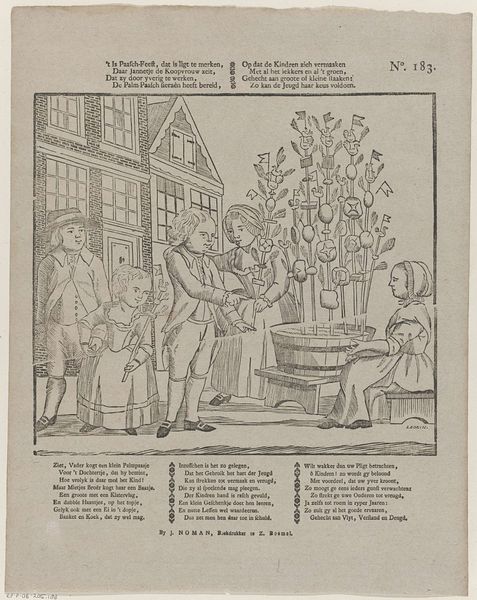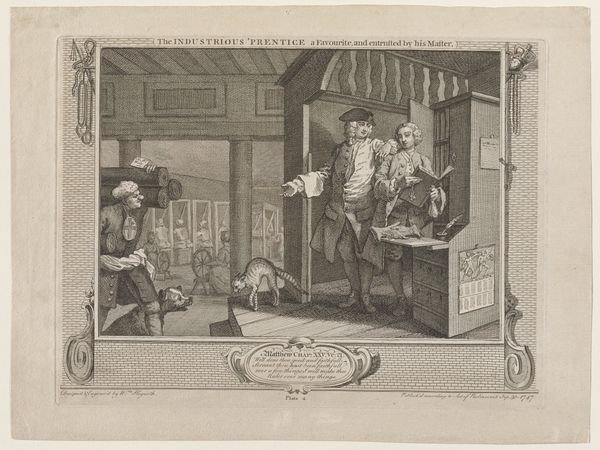![De Sint Niklaasvreugd, daar de kindren / Zo zeer naar haaken, om het zoet [(...)] by Jacobus Robijn](/_next/image?url=https%3A%2F%2Fd2w8kbdekdi1gv.cloudfront.net%2FeyJidWNrZXQiOiAiYXJ0ZXJhLWltYWdlcy1idWNrZXQiLCAia2V5IjogImFydHdvcmtzL2Q1MGQ2MmI3LTkyMmUtNDY2Yy1hNTE3LWIyNDRhMjgyY2NlOS9kNTBkNjJiNy05MjJlLTQ2NmMtYTUxNy1iMjQ0YTI4MmNjZTlfZnVsbC5qcGciLCAiZWRpdHMiOiB7InJlc2l6ZSI6IHsid2lkdGgiOiAxOTIwLCAiaGVpZ2h0IjogMTkyMCwgImZpdCI6ICJpbnNpZGUifX19&w=3840&q=75)
De Sint Niklaasvreugd, daar de kindren / Zo zeer naar haaken, om het zoet [(...)] 1806 - 1830
0:00
0:00
drawing, print, engraving
#
portrait
#
drawing
#
narrative-art
# print
#
genre-painting
#
engraving
Dimensions: height 411 mm, width 317 mm
Copyright: Rijks Museum: Open Domain
Curator: Let’s dive into this intriguing engraving, "De Sint Niklaasvreugd, daar de kindren / Zo zeer naar haaken, om het zoet [(...)]". What captures your attention in this image? Editor: Well, it’s dated sometime between 1806 and 1830, and it looks like it depicts children gazing into a shop window. There’s a sense of longing, maybe a little bit of playful anticipation. I am wondering about what’s happening outside of the scene as well, because it feels so closed-off? What’s your take on it? Curator: That longing is precisely what I find so compelling! But let’s consider it through the lens of its historical context. The image portrays not just simple childhood joy, but a complex interplay of social structures and desires. Notice how the children are positioned, what they're wearing, and the goods they covet in the shop window. What do these details tell you? Editor: I see what you mean. Their clothes seem to mark differences in class, perhaps. The items in the window... are they sweets? I can definitely see a kind of economic stratification represented here. The goods are displayed to entice, but only some children can actually obtain these sugary treats? Curator: Exactly! And how might we interpret Saint Nicholas in this context? He appears almost as a symbol of aspiration and unattainable desire. The engraving isn't merely a snapshot of children's delight but a subtle commentary on the burgeoning consumer culture and its impact on societal values. It prompts us to consider ideas around desire, accessibility, and the social realities that shape childhood experiences. Editor: I hadn’t thought about it like that. The figures really highlight economic inequality during that era and, in that light, St. Nicholas seems like another way to control society, maybe. The idea that these children cannot get the objects of their desires really challenges my prior conception about the holiday as just a giving time. Curator: It’s through this critical dialogue with art history and theory that we start to understand how seemingly simple images can reveal broader intersectional narratives related to class, identity, and social constructs. Editor: This has really opened my eyes! I'll never look at old holiday prints in the same light. Thanks!
Comments
No comments
Be the first to comment and join the conversation on the ultimate creative platform.
